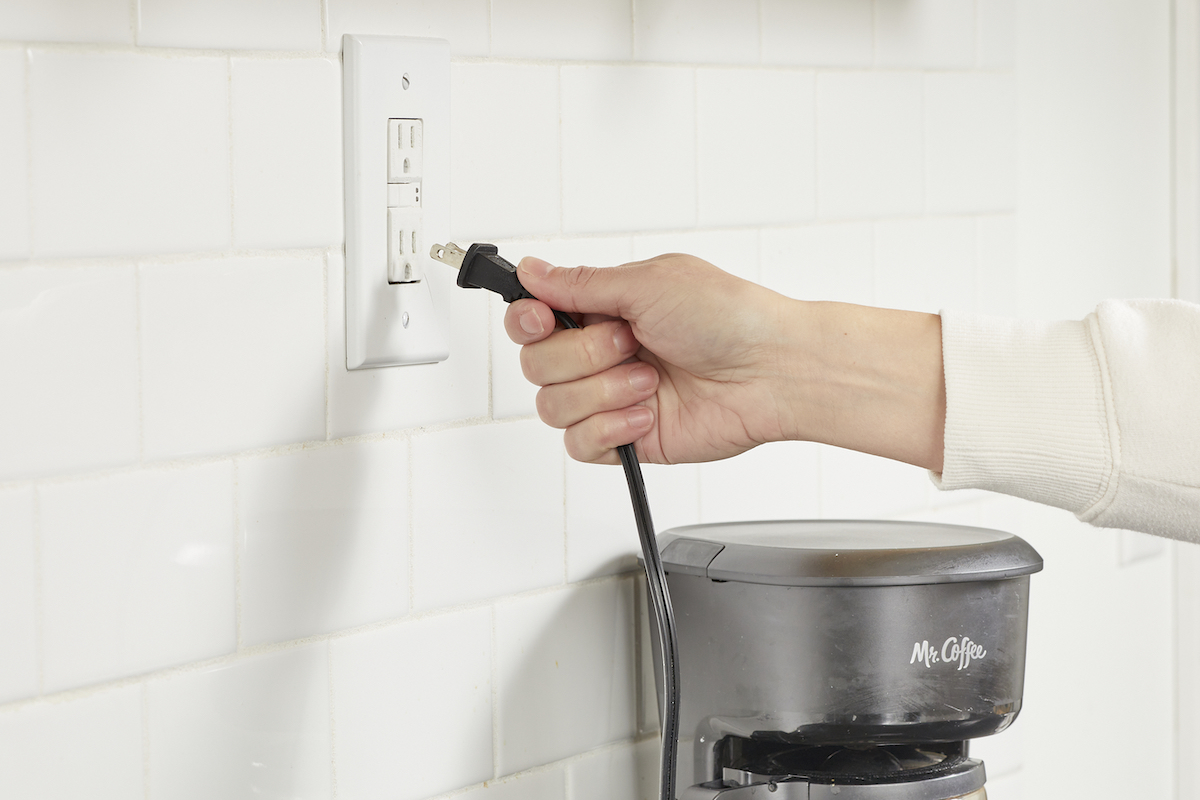We may earn revenue from the products available on this page and participate in affiliate programs. Learn More ›
What You Need to Know
- An outlet not working may be due to an issue with the home’s electrical system or a problem with the outlet itself.
- Some common problems with the outlet itself are a GFCI needing to be reset, the outlet could be burned out, it may have loose connecting wires, or the outlet may have been installed incorrectly.
- If the outlet is not damaged, it may be half-hot and not be switched on, there may be a problem with the device being plugged in, there may be a blown fuse in the electrical system, or the circuit breaker may have tripped.
- Issues with an electrical outlet or the home’s electrical system are best addressed by a professional electrician.
Q: When I plugged my cell phone charger into a kitchen outlet, my phone didn’t start charging—the electrical outlet was not working. Is there something I can do to fix the outlet myself, or should I call an electrician?
A: A power outlet not working is not only an inconvenience but also, unfortunately, a common issue. What’s more, there are quite a few potential causes, meaning diagnosing the problem may not be straightforward. Depending on whether it’s a tripped GFCI or a blown fuse, homeowners may be able to figure out how to fix an outlet that is not working themselves. However, since electrical systems are complex and potentially dangerous, it’s generally best to hire an electrician near you to ensure that the issue is taken care of safely.
First, a quick note on outlets: The vertical slots in the outlet are called “shutters,” and the small hole beneath each set of shutters is the “ground.” Most outlets will accept either 2-prong or 3-prong plugs. If the home has older wiring, the third hole (the “ground”) may not be present. It’s worth keeping this anatomy in mind while trying out troubleshooting tips.
1. You may have a half-hot outlet.
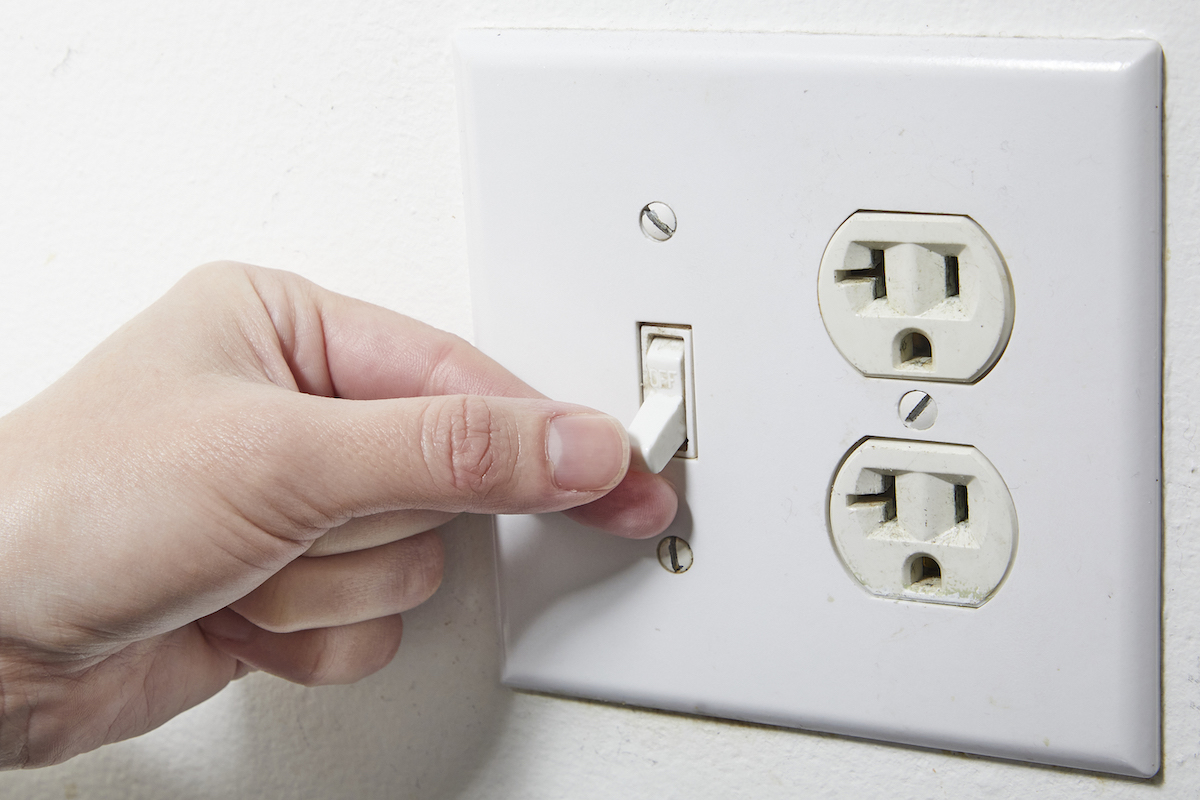
Sometimes called a “lamp outlet,” this type of electrical outlet is a little different from standard outlets in that half of it (usually the bottom half) is controlled by a switch on the wall. The purpose of a half-hot outlet is to allow homeowners to plug in a lamp, turn it on, and then control the lamp from the light switch. This is especially common in rooms that don’t have overhead lighting. If there is a switch on the wall that doesn’t seem to go to anything, it could very well control a half-hot outlet. Flip this switch and then try the outlet again. “This testing is also an opportunity to determine which switches control which outlets,” says Dan Mock, vice president of operations at Mister Sparky, a nationwide electrical company. “If the outlets and switches are not set up the way you want them to be, an electrician can safely and easily reconfigure them.”
2. The device, not the outlet, may be faulty.
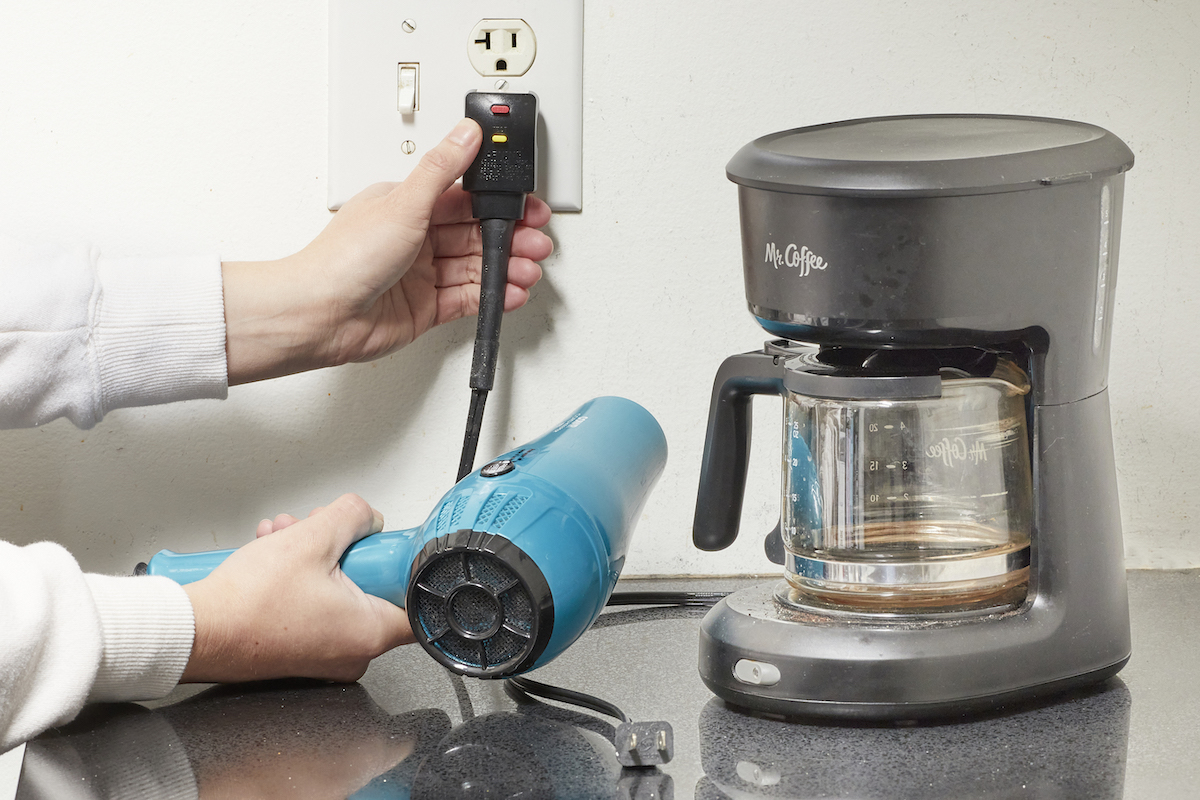
Blaming a perfectly functional outlet for a lamp not turning on is a common lighting mistake almost everyone makes. On the off-chance that it’s not the electrical outlet but rather a burnt-out light bulb that is the problem, plug something else into the same outlet, such as a blow dryer or a cell phone charger. It’s also a good idea to see if the breaker has tripped. If not, this is another indication that the problem may be with the device being plugged in rather than the outlet.
Additionally, if one outlet is not working the majority of the time, other outlets nearby will also lose power. Plug devices into other outlets in the room to see if they’re working. If other outlets are dead, there may be a larger issue.
3. If it’s a GFCI outlet, it might need to be reset.
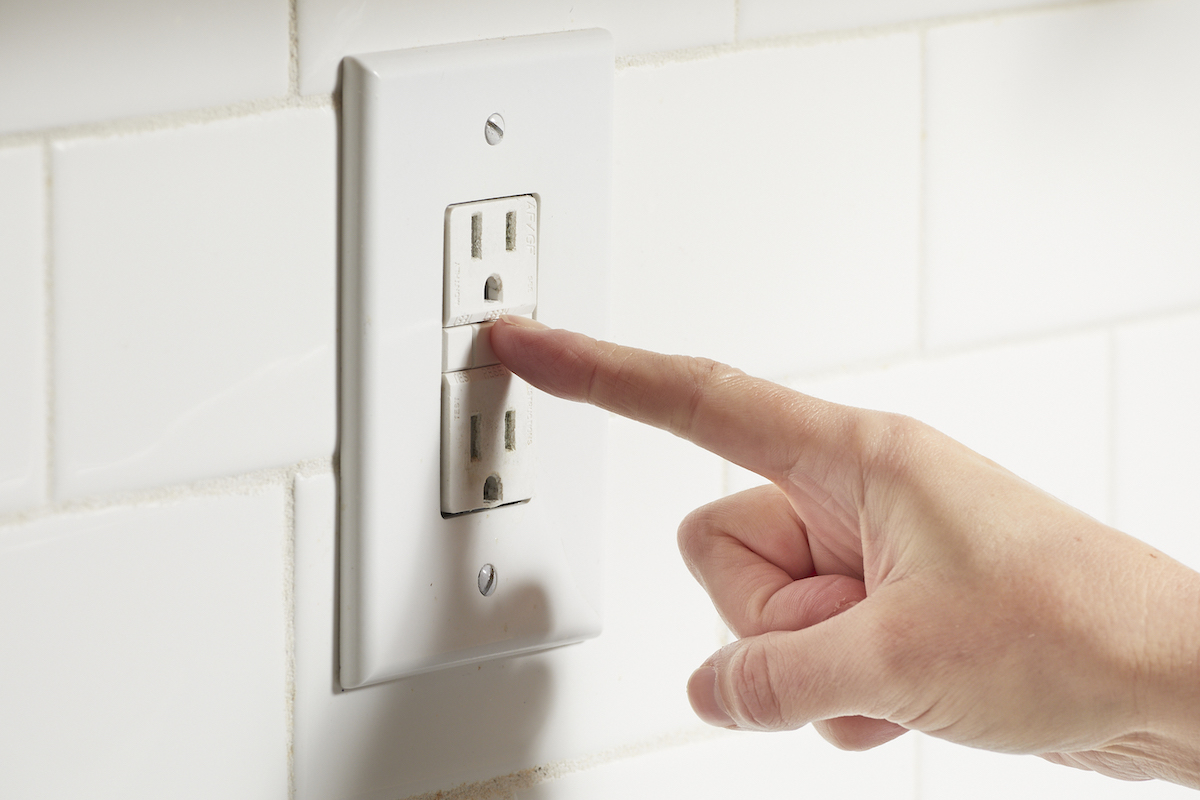
While ground fault circuit interrupter (GFCI) outlets may be inconspicuous, these are common household items that could save lives. Before the advent of GFCIs, electric shock injuries were more likely to occur when someone was standing in water or otherwise in contact with water when using an electrical appliance, such as a blow dryer. In these scenarios, it was possible for the electrical current to surge through the person, thus electrocuting them. Building codes now require the installation of GFCIs in bathrooms, kitchens, and laundry rooms—anywhere near water.
When a GFCI outlet senses a surge in electricity, it’s designed to shut off to minimize the risk of electrocution. GFCIs can be temperamental and shut off occasionally, even when a surge has not occurred. Fortunately, resetting a GFCI outlet that’s not working is as simple as pushing the small rectangular button on the center of the outlet and plugging in a device to see if it comes on. If the GFCI outlet won’t reset or keeps tripping, it might not be a fluke and there may be water infiltration. According to Christopher Haas, expert electrician and owner of Haas & Sons Electric in Millersville, Maryland, “If your GFCI is tripping because of a recent storm or [because you] had your house power washed, you may need to wait a day or two for the exterior receptacles to dry out before trying again.” If the outlet is truly damaged, a new GFCI outlet costs about $210 to install.
4. A blown fuse could be the cause of the outlet not working.
Before circuit breakers became the norm, most homes had fuse boxes. Much like a circuit breaker, a fuse box stops electricity overloads before they can cause shocks or fires. But instead of tripping a switch like a circuit breaker, the fuse will melt to halt the flow of electricity. The fuse is contained behind glass, and if the glass has any residue or is cracked, it’s likely that the fuse has blown and will need to be replaced.
Blown fuses are a sign that more electricity is being used than what the home’s system can currently handle. It’s a good idea to unplug any appliances or devices when they aren’t being used to lighten the load (another reason to develop this habit is that leaving phones and laptops plugged in consistently is a mistake that can kill electronics, too). Otherwise, an electrician may recommend upgrading electrical panels. The cost to replace an electrical panel ranges from $522 to $2,082.
5. The outlet itself could have burnt out.
Although it isn’t common, an outlet can burn out or otherwise go bad and quit functioning. This can happen when an electrical surge results in a small spark or flame that burns out the inside of the outlet. There will typically be some evidence of this, such as scorch marks on the outlet cover or a burning smell. Mock warns, “Hot or even warm outlets are extremely dangerous and should be replaced immediately. You should not continue to attempt to use these outlets until [they’re] repaired. Malfunctioning outlets can cause a serious shock and are a very dangerous fire hazard.”
If other potential problems have been ruled out, it might be time to consider replacing the outlet. Once again, for those who intend to do it themselves, it’s vital to make sure the breaker switch that powers the outlet is in the “off” position. The first step is to remove the outlet cover and disconnect the wires from the old outlet with a screwdriver. Then, that process can be reversed to install the new outlet, making sure the wires are connected, as described in an upcoming step.
6. There may be a tripped circuit breaker causing the issue.
The breaker box, often located in a utility room or basement, features multiple breakers (switches), and each one controls the power to a different part of the home. If a circuit breaker has tripped, it’s likely that all of the electrical components in a room have failed, not just a single outlet.
Homeowners can inspect their circuit breaker to find out whether it has tripped. Behind the panel door are one or two rows of switches labeled “OFF” on one side and “ON” on the other side. If a breaker tripped, the switch will be in the middle, between OFF and ON. If there is a switch in the middle, it can be flipped to the OFF side first, and then to the ON side. That will reset the breaker. Once this has been done, it’s a good idea to go back to the problem outlet and test it again. There are two main reasons for a circuit breaker to trip.
- The electrical circuit may be overloaded. If the power was restored to the outlet after flipping the breaker, the circuit may have been overloaded. This can happen if too many things (especially heat-generating appliances, as fire departments wish homeowners knew) are plugged into the same circuit at once. When that happens, the circuit breaker will flip and cut the power because more electricity is being drawn than the circuit can handle. According to Haas, “Sometimes, a breaker can be bad or old and not hold its marked amperage amount.” In this case, an electrician “will be able to determine if the breaker is weak, if something is using too much power, or if you may have a hidden issue in the circuit that needs flushing out.”
- There may be a short circuit. A short circuit occurs when the intended flow of electricity is interrupted, such as when wires are accidentally in contact. A short circuit is dangerous and can lead to a fire. If the circuit breaker keeps tripping after being reset—and there isn’t anything plugged in—it’s a good idea to leave the breaker off and call an electrician who is familiar with the process of wiring a breaker box and knows how to repair or how to replace a circuit breaker safely.
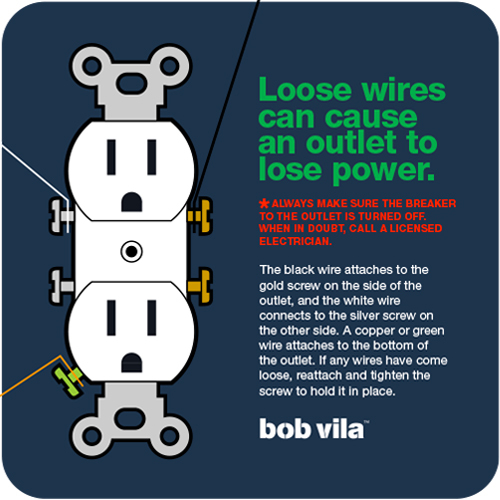
7. Loose connecting wires can cause an outlet to lose power.
If the reason for a wall outlet not working is still unclear after the homeowner has done some troubleshooting, this could be a warning sign of dangerously outdated electrical wiring, or it could be due to loose wires. Most homeowners aren’t comfortable with complex electrical systems and may not know the meaning of various electrical wire colors, in which case this is the time to call the electrician.
Those who want to check the wiring themselves can do so by making sure the breaker to the outlet is switched to the “off” position, then removing the faceplate from the outlet and removing the screws that hold the outlet in place. Then the outlet can be pulled out a few inches from the outlet box.
The ends of the wires that attach to the outlet should be securely fastened beneath the outlet screws. The black wire attaches to the gold screw on the side of the outlet, and the white wire connects to the silver screw on the other side. A copper or green wire attaches to the bottom of the outlet. If any of the wires have come loose, they can be reattached by positioning the wire beneath the corresponding screw and then tightening the screw securely to hold it in place.
8. The outlet may have been improperly installed.
If the outlet was installed or repaired by someone other than a licensed electrician, there may have been mistakes that led to the outlet not working properly. One example is loose wiring, which can be tightened up fairly simply. Another common mistake called “backstabbing” occurs when wires are not secured with screws and are instead forced inside of the outlet. If incorrect installation has caused issues that have gone unnoticed, there may be permanent damage, such as burnouts. An electrician can tell if an outlet has been wired up incorrectly and how serious the problem is.
An electrician can help diagnose the issue and can get the outlet working again quickly.
Home wiring is a complex system, and electricians have special equipment and testers to help them locate electrical problems that are difficult to pinpoint otherwise. This makes the cost of hiring an electrician well worth it. “Professional electricians have years of experience in not only diagnosing the issue but also making safe repairs that will last,” says Haas. “A professional will have a deep understanding of how the house was wired and be able to see the wires behind the walls essentially. They will also be up to date with the current code and safety standards, ensuring the repair is done correctly.”
Homeowners will not necessarily be able to discern the severity of an electrical issue without experience. For that reason, it is generally best to err on the side of safety as soon as a problem arises and have it looked at by a professional. Going an extra step and getting an annual inspection of a home’s electrical system can prevent dangerous problems from developing and provide great peace of mind.

